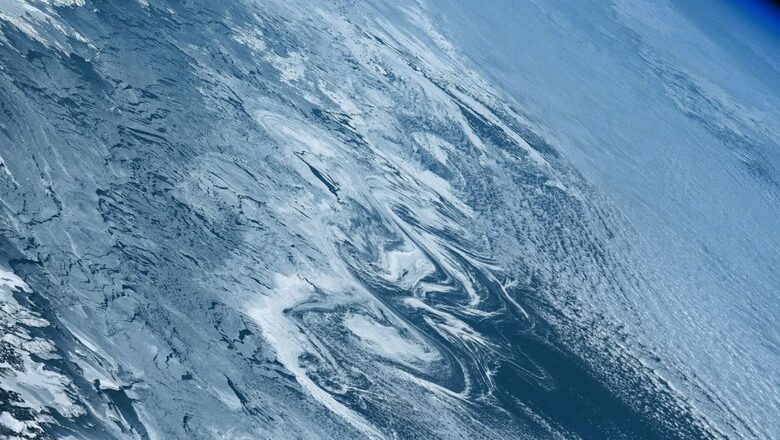
views
National Aeronautics and Space Administration (NASA) is known for sharing mesmerising pictures of the cosmos and the universe time and again. Besides that, NASA often also shares the most captivating snapshots of our home planet from the vastness of space. In a recent one, the space agency shared another picture showing a stunning display of frozen seawater captured by astronauts from the International Space Station on 3 February 2024. According to a NASA post, threads of sea ice trace ocean currents created the swirls visible along the coast of Labrador, in eastern Canada.
Taking to its Instagram handle, the space agency while giving a detailed description of the image explained that the ocean currents stirred ice chunks into circular vortices or eddies, which were later frozen due to a right balance of temperature.
“Ocean currents can stir ice chunks into circular vortices, or eddies. Eddies form frequently along boundaries between cold and warm ocean currents in the spring and fall, due to differences in water density. Even then, however, an ice eddy won’t form except under certain conditions: it must be warm enough for the ice to fragment, but cool enough for it to remain frozen,” it wrote.
Check the image:
A post shared by NASA (@nasa)
Further describing the image captured from ISS, NASA added, “A portion of Earth pictured from the International Space Station. The cast of Labrador, in eastern Canada, frames the left side of the image, while icy seas expand towards the right. An icy swirl is pictured down the centre of the water. A layer of blue glowing atmosphere contrasts with the darkness of space.”
Social media users also dropped multiple reactions to the picture, with many expressing amazement. A user wrote, “Omg, amazing contrasts of blue glowing atmosphere with the darkness of space!”, while another one wrote, “Now that’s what I call Thin Ice.”
NASA image shows Earth and Moon together
Earlier this month, NASA shared another mesmerising picture of showing Moon and Earth in a single frame from the International Space Station.
A post shared by NASA (@nasa)
The picture shows the Moon in its crescent phase, while the Earth appears bluish with a few faint white clouds in the atmosphere. “Our Moon is in its waning crescent phase, where most of the sunlight is illuminating its far side – the side we can’t directly see from Earth. The waning crescent is the last phase before the lunar cycle repeats with a “new moon” phase, where it is completely obscured from Earth’s perspective,” the caption read.
What's your reaction?
















Comments
0 comment